Come join us now, and enjoy playing your beloved music and browse through great scores of every level and styles!
Can’t find the songbook you’re looking for? Please, email us at: sheetmusiclibrarypdf@gmail.com We’d like to help you!
Table of Contents
William Grant Still: Three Visions (Suite for piano solo)
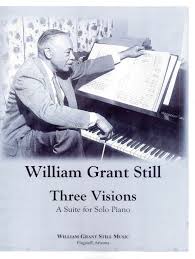
Best Sheet Music download from our Library.
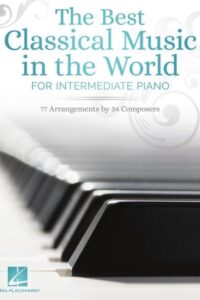
Please, subscribe to our Library.
If you are already a subscriber, please, check our NEW SCORES’ page every month for new sheet music. THANK YOU!
0:00 – Dark Horseman 1:30 – Summerland 6:00 – Radiant pinnacle
Browse in the Library:
Or browse in the categories menus & download the Library Catalog PDF:
William Grant Still
William Grant Still (1895 – 1978) was an American composer, arranger, conductor, and multi-instrumentalist, often called “the Dean of African American composers.” He was the first African American to have a symphony performed by a major orchestra in the United States, the first to conduct a major symphony orchestra, and the first to have an opera produced by a major opera company.

Early Life and Education
- Born on May 11, 1895, in Woodville, Mississippi, and raised in Little Rock, Arkansas.
- His father died when he was an infant, and his mother, a teacher, encouraged his musical interests.
- Studied at Wilberforce University, where he initially pursued medicine but shifted to music.
- Later trained at the Oberlin Conservatory of Music, then studied composition with George Whitefield Chadwick and later with avant-garde composer Edgard Varèse in New York.
Career and Achievements
- Worked as an arranger for popular and jazz bands in New York, including for W. C. Handy and Paul Whiteman.
- Became involved with the Harlem Renaissance, blending African American musical traditions with classical forms.
- His Symphony No. 1 “Afro-American” (1930) was the first symphony by an African American to be performed by a major U.S. orchestra (Rochester Philharmonic, 1931).
- Conducted the Los Angeles Philharmonic at the Hollywood Bowl in 1936, making him the first African American to lead a major orchestra in the U.S.
- His opera Troubled Island (1939, libretto by Langston Hughes and Verna Arvey) was the first by an African American staged by a major company (New York City Opera, 1949).
Musical Style
- Fused classical European traditions with African American idioms: blues, spirituals, jazz, and folk tunes.
- Emphasized lyricism, accessibility, and cultural expression rather than strict modernist abstraction.
- Advocated for a distinctly American classical music rooted in Black cultural traditions.
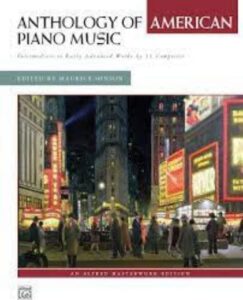
Notable Works
- Symphonies: Afro-American Symphony (No. 1), Song of a New Race (No. 2), The Sunday Symphony (No. 3), Autochthonous Symphony (No. 4), Western Hemisphere Symphony (No. 5).
- Operas: Troubled Island, A Bayou Legend, Highway 1, U.S.A.
- Chamber & Vocal Music: Lyric Quartette, Danzas de Panama, many art songs.
- Also wrote for radio, film, and popular ensembles.
Legacy
- Broke multiple racial barriers in American classical music.
- Opened doors for later generations of African American composers and performers.
- His works are increasingly studied and performed, recognized as cornerstones of 20th-century American music.
- Died in Los Angeles, California, on December 3, 1978.
William Grant Still’s music stands out for celebrating African American heritage within the classical tradition, offering a unique and dignified voice at a time when systemic racism excluded many Black composers from mainstream recognition.
Three Visions (1935) is one of William Grant Still’s most powerful works for solo piano. It is a short suite in three movements, deeply symbolic, written during the Harlem Renaissance period when Still was developing a distinctive African American voice within classical idioms. The suite is often regarded as a spiritual and philosophical statement on the human soul’s journey after death.
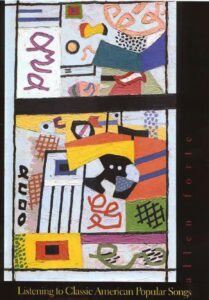
Three Visions (1935) Overview and Musical Analysis
- Title: Three Visions (for solo piano)
- Date: 1935
- Movements:
- Dark Horsemen
- Summerland
- Radiant Pinnacle
- Theme: The cycle represents the progression of the human soul: confrontation with death, passage to spiritual peace, and ultimate ascension.
1. Dark Horsemen
- Character: Turbulent, dissonant, and rhythmically urgent.
- Musical features:
- Rapid ostinati and syncopations drive the texture.
- Dense chords, sharp dynamics, and angular melodies suggest violence and inevitability — the soul’s confrontation with mortality.
- Harmonic language: rooted in tonal centers but heavily chromatic, with influences from early modernism (Still studied with Varèse).
- Strong percussive writing evokes imagery of galloping horses (possibly a reference to the biblical Four Horsemen of the Apocalypse).
Interpretation: This movement symbolizes the struggle and chaos of death, the breaking away of the soul from earthly ties.
2. Summerland
- Character: Gentle, lyrical, and serene — the most frequently performed movement.
- Musical features:
- Lush, hymn-like melody in the middle register, often played with a singing legato.
- Rich Romantic harmonies, influenced by Chopin and Debussy but colored with blues-inflected lines.
- Transparent texture, long sustained chords, and rubato create a meditative atmosphere.
- Tonal stability (often interpreted in D♭ major) provides calmness.
Interpretation: Summerland represents the spiritual paradise the soul reaches after death — peaceful rest and eternal beauty.
This movement is sometimes performed alone as an independent concert piece or even arranged for orchestra.
3. Radiant Pinnacle
- Character: Triumphant, luminous, and ascending.
- Musical features:
- Energetic rhythms, sweeping arpeggios, and brighter harmonies than in the previous movements.
- Builds momentum with a sense of striving upward, often through sequences and rising melodic gestures.
- Tonal clarity, major sonorities, and climactic chords express transcendence.
- Harmonically more consonant than Dark Horsemen, but with modern chromatic coloring.
Interpretation: This final movement depicts the soul’s union with the divine, ascending to its highest state — ultimate illumination.
Stylistic Significance
- Still fuses African American spiritual aesthetics (hymn-like phrasing, blues shadings, and rhythmic vitality) with Romantic piano traditions and 20th-century modernism.
- The three movements form a narrative arc: struggle → peace → transcendence.
- Philosophically, the suite echoes African American religious culture, yet framed in a universal human story of death and renewal.
In short, Three Visions is both a musical poem and a spiritual statement. It demonstrates Still’s ability to merge classical craft with African American cultural expression, creating a deeply humanistic and uplifting work.
Perfect — let’s dive into a harmonic walkthrough of “Summerland” from William Grant Still’s Three Visions. Since this movement is often performed alone and is the most tonal of the suite, it lends itself beautifully to harmonic analysis.
(Note: Exact bar numbers vary depending on the edition, but I’ll give the progression in sections. The piece is most often read in D♭ major.)
“Summerland” — Harmonic Analysis
Opening (mm. 1–4)
- Key: D♭ major
- Chords:
- I (D♭ major) — tonic established gently, hymn-like.
- IV (G♭ major) with added 6th/9th sonorities.
- I again, enriched by suspensions and inner voice motion.
The effect is calm, hymn-like stability. Still avoids strong cadences, instead sustaining a floating atmosphere.
First Phrase (mm. 5–12)
- Melody enters in the middle register, supported by soft chords.
- Progression:
- I → V/vi → vi (B♭ minor) → ii (E♭ minor) → V (A♭ major).
- Resolves back to I (D♭).
This is a classical diatonic motion but with added-color tones (6ths, 9ths), giving a Debussy-like lushness. The move to vi and ii emphasizes a spiritual, tender quality rather than dramatic tension.
Second Phrase (mm. 13–20)
- More chromaticism enters.
- Chords:
- I → ♭VII (C♭ major) → IV (G♭) → ii7 (E♭m7) → V7 (A♭7).
- Resolution: cadences softly back to I.
The use of ♭VII (C♭) is borrowed from folk/blues progressions. It enriches the harmony with a distinctly African American inflection inside an otherwise classical framework.
Climactic Middle Section (mm. 21–32)
- Harmonically more adventurous:
- Alternation between vi (B♭ minor) and IV (G♭ major).
- Sequence through chromatic mediants: I (D♭) → iii (F minor) → V/ii (F7) → ii (E♭ minor).
- Approaches V7 (A♭7) with stronger rhythm and dynamics.
The chromatic mediant shifts (D♭ → Fm → A♭) give the impression of warmth and expansion — the soul ascending in vision.
Return (mm. 33–40)
- Recapitulation of the opening theme.
- Progression largely tonic (I), with embellishments:
- I → IV → ii7 → V7 → I.
- Still decorates the chords with added 9ths and 11ths, keeping the sound lush and modern.
Coda (mm. 41–end)
- Gentle descent, cadencing finally on a pure I (D♭ major).
- Chords sustain with long fermatas, creating timeless stillness.
The coda is essentially a plagal cadence (IV → I), which resonates with the feeling of a hymn or spiritual.
Summary of Harmonic Style in “Summerland”
- Foundation: Firmly tonal, centered in D♭ major.
- Coloration: Use of added 6ths, 9ths, 11ths for lush textures.
- African American inflection:
- Borrowed ♭VII (C♭ major) → I.
- Blues-like coloring of melodic lines (flattened 3rd, 7th inflections).
- Narrative arc: Gentle tonic → chromatic expansion → luminous return.
- Effect: A meditative vision of paradise — serenity, lyricism, timeless rest.
So, harmonically, Summerland balances European Romanticism (Chopin, Debussy) with African American idioms (bluesy modal borrowing, plagal cadences). This is why it feels both “classical” and “soulful.”
| Artist or Composer / Score name | Cover | List of Contents |
|---|---|---|
| One Day – Pirates of the Caribbean 3 – At World’s End (Hans Zim | ||
| One day I’ll fly away (Moulin Rouge OST) Joe Sample | ||
| One Direction – I Want | One Direction I-Want | |
| One Direction Midnight Memories Piano Vocal Guitar |
 |
One Direction Midnight Memories Piano Vocal Guitar |
| One Direction Take Me Home Piano Vocal Guitar |
 |
One Direction Take Me Home Piano Vocal Guitar |
| One Direction Up All Night Piano Vocal Guitar |
 |
One Direction Up All Night Piano Vocal Guitar |
| One more time (Laura Pausini) | ||
| One Piece A Mother’s Love |
 |
|
| One Piece Because We’re Alive |
 |
|
| One Piece One Piece Minato Mura |
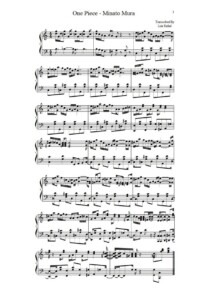 |
|
| One Republic Apologize Sheet Music (Piano Solo) | One Republic Apologize Sheet Music (Piano Solo) | |
| One Republic Counting Stars Piano Sheet Music |
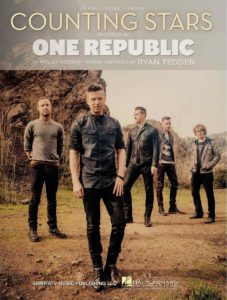 |
One Republic Counting Stars Piano Sheet Music |
| One Republic Feat. Timbaland – Apologize | ||
| One Republic Native Piano Vocal Guitar |
 |
One Republic Native Piano Vocal Guitar |
| One Summer’s Day (The Name Of Life) (Musescore File).mscz | ||
| Opening (From Glassworks) Philip Glass (Musescore File).mscz | ||
| Opening Up (Finale) Waitress The Musical (Musescore File).mscz | ||
| Opera Classics. Easy Piano Sheet Music |
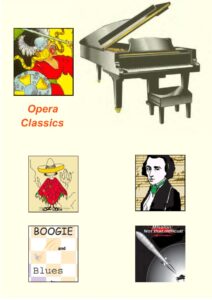 |
Opera Classics. Easy Piano Sheet Music |
| Opera Intermezzi And Ballet Music Solo Piano Arrangements By John Gribben | Opera Intermezzi arr. for piano solo (and Ballet Music) | |
| Oran – Yves Saint Laurent OST (Ibrahim Maalouf) | ||
| Orange Blue – Can Someboody Tell Me Who I Am – Dinosaurs | ||
| Orchestral Manoeuvres In The Dark OMD Electricity | Orchestral Manoeuvres In The Dark OMD Electricity | |
| Orchestral Manoeuvres In The Dark OMD Enola Gay | Orchestral Manoeuvres In The Dark OMD Enola Gay | |
| Orff Carmina Burana 2. Fortune plango vulnera (piano solo) | Orff Carmina Burana 2. Fortune plango vulnera (piano solo) | |
| Orff Carmina Burana 2. Fortune Plango Vulnera (Musescore File).mscz | ||
| Original David Gilmour An Annotated Guide To The Guitar Technique |
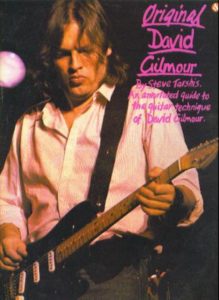 |
Original David Gilmour An Annotated Guide To The Guitar Technique |
| Ornette Coleman Collection of compositions Sheet Music |
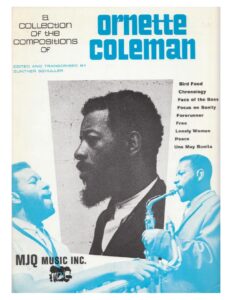 |
Ornette Coleman Collection of compositions Sheet Music |
| Ornette Coleman Compositions A Collection of 26 | Ornette Coleman Compositions | |
| Ornette Coleman Peace Solo Transcription |
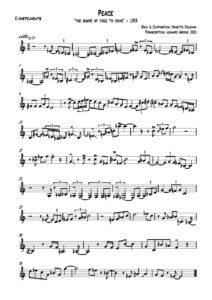 |
|
| Orquestación – Alan Belkin (Spanish-Español) | Book Theory | |
| Oscar Peterson A Child Is Born (Piano Solo) | Oscar Peterson A Child Is Born (Piano Solo) | |
| Oscar Peterson Hymn To Freedom Easy Piano Solo Arr. | Oscar Peterson Hymn To Freedom Easy Piano Solo Arr. | |
| Oscar Peterson Hymn To Freedom Piano Solo Arr. | Oscar Peterson Hymn To Freedom Piano Solo Arr. | |
| Oscar Peterson Love Ballade |
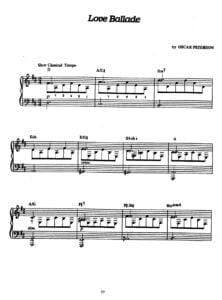 |
|
| Oscar Peterson Satin Doll |
 |
|
| Oscar Peterson – A Jazz Portrait of Frank Sinatra Songbook Artist Transcriptions Piano (Oscar Peterson) |
 |
|
| Oscar Peterson – Artist transcriptions (piano) |
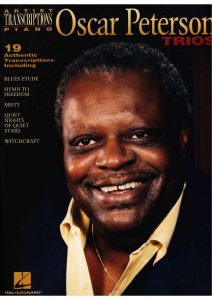 |
Oscar Peterson transcriptions |
| Oscar Peterson – Boogie Blues Etude (1974) (Piano Solo Transcription) sheet music |
 |
|
| Oscar Peterson – C Jam Blues (sheet music transcription – with double bass) | ||
| Oscar Peterson – Georgia On My Mind (Carmichael-Gorrell) from Night TRain 1962 |
 |
|
| Oscar Peterson – Hymn to Freedom Easy Piano Solo arr. (Musescore File).mscz | ||
| Oscar Peterson – Jazz exercises (piano) Sheet Music (partition) – |
 |
|
| OSCAR PETERSON – JAZZ PIANO COLLECTION |
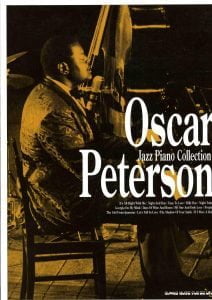 |
OSCAR PETERSON – JAZZ PIANO COLLECTION |
| Oscar Peterson – Jazz piano for the young pianist – 1 |
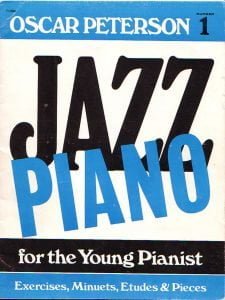 |
|
| Oscar Peterson – Jazz piano for the young pianist – 2 |
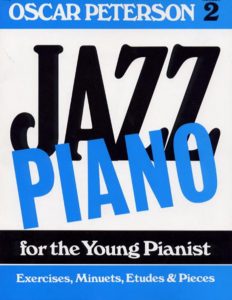 |
|
| Oscar Peterson – Oscar Peterson Plays Duke Ellington (Artist Transcriptions Piano Series) |
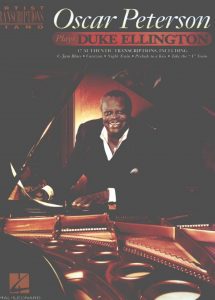 |
Oscar Peterson – Oscar Peterson Plays Duke Ellington (Artist Transcriptions Piano Series) |
| Oscar Peterson – The Bach Suite Allegro (Musescore File).mscz | ||
| Oscar Peterson – The Bach Suite Andante |
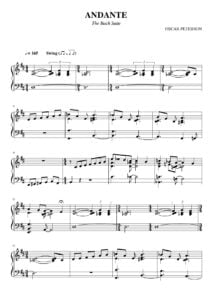 |
|
| Oscar Peterson – The Girl from Ipanema |
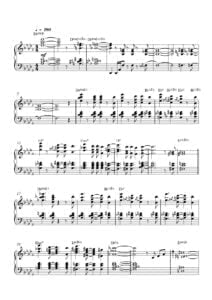 |
|
| Oscar Peterson – The Girl from Ipanema (Piano transcription) |
 |
|
| Oscar Peterson – The very best of (Artistry Piano transcriptions) |
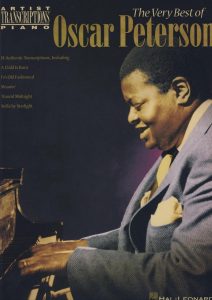 |
Oscar Peterson – The very best of |
| Oscar Peterson – The Will To Swing by Gene Lees (Book) |
 |
|
| Oscar Peterson A musical biography – Barris, Alex |
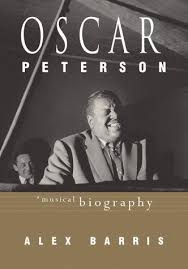 |
|
| Oscar Peterson A Royal Wedding Suite Artist Transcriptions Piano 2010 |
 |
Oscar Peterson A Royal Wedding Suite Artist Transcriptions Piano 2010 |
| Oscar Peterson Billies Bounce sheet music transcription |
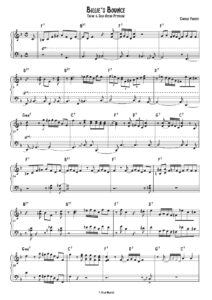 |
|
| Oscar Peterson Blues Etude (piano solo) |
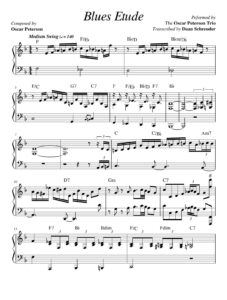 |
|
| Oscar Peterson Blues for Martha Transcription from Another Day | Oscar Peterson Blues for Martha Transcription from Another Day | |
| Oscar Peterson Blues for Martha Transcription from Another Day (Musescore file).mscz | Musescore File | |
| Oscar Peterson C Jam Blues |
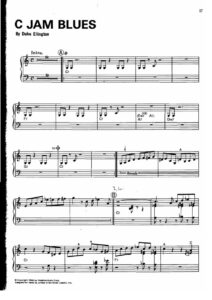 |
|
| Oscar Peterson Days Of Wine And Roses Jazz Standard | Oscar Peterson Days Of Wine And Roses Jazz Standard | |
| Oscar Peterson Georgia On My Mind by Hoagy Carmichael |
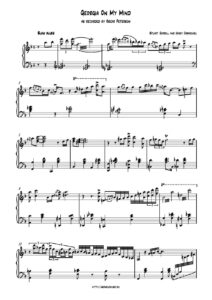 |
|
| Oscar Peterson Jazz Exercises Minuets Etudes & Pieces Complete 1-2-3 |
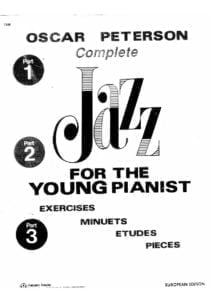 |
|
| Oscar Peterson Jazz Exercises Minuets Etudes Pieces For Piano 2nd Edition |
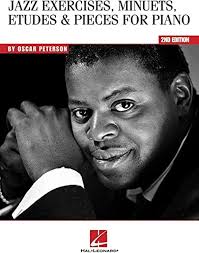 |
|
| Oscar Peterson Jazz Piano Duets |
 |
|
| Oscar Peterson Jazz Piano Highlights |
 |
 Oscar Peterson Jazz Piano Highlights Oscar Peterson Jazz Piano Highlights |
| Oscar Peterson Jazz Piano Solos Transcriptions and adaptations from original recordings by Kayo Matsunobu |
 |
Oscar Peterson Jazz Piano Solos Transcriptions and adaptations from original recordings by Kayo Matsunobu |
| Oscar Peterson Night Train Artist Transcriptions Piano |
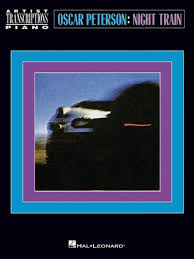 |
Oscar Peterson Night Train Artist Transcriptions Piano |
| Oscar Peterson Note For Note Transcriptions |
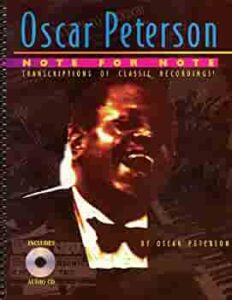 |
Oscar Peterson Note For Note Transcriptions |
| Oscar Peterson Omnibook For Piano Transcribed exactly from his recorded solos |
 |
Oscar Peterson Omnibook For Piano Transcribed exactly from his recorded solos |
| Oscar Peterson Piano Intros | Oscar Peterson Piano Intros | |
| Oscar Peterson Plays Broadway (Transcriptions) |
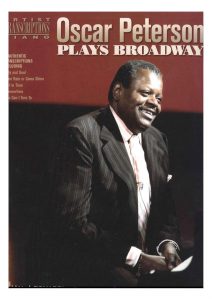 |
Oscar Peterson Plays Broadway Transc. |
| Oscar Peterson Ray Brown – You Look Good To Me |
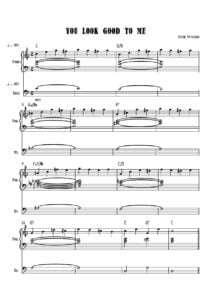 |
|
| Oscar Peterson Salute To Bach The Bach Suite (complete) from Live in Los Angeles 1985 |
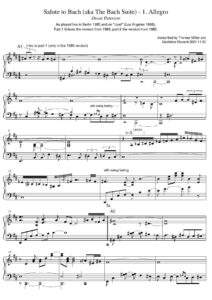 |
|
| Oscar Peterson Softly As In A Morning Sunrise sheet music transcription |
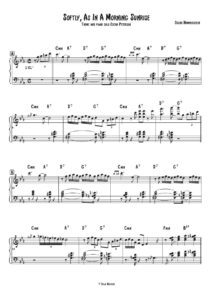 |
|
| Oscar Peterson Take the A train (by Billy Strayhorn) | Oscar-Peterson-Take-The-A-Train | |
| Oscar Peterson Take The A Train 1958 sheet music transcription |
 |
|
| Oscar Peterson Tenderly By Walter Gross Piano Transcription (1953) | Oscar Peterson Tenderly By Walter Gross Piano Transcription (1953) | |
| Oscar Peterson Transcriptions Miscellany Of Ballads (Piano) |
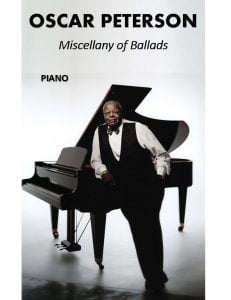 |
Oscar Peterson Ballads |
| Oscar Peterson Trio The Canadiana Suite Artist-Transcription Piano |
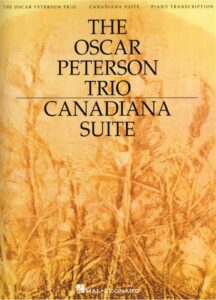 |
|
| Oscar Peterson When Summer Comes Piano Two Transcription (Easy and advanced) |
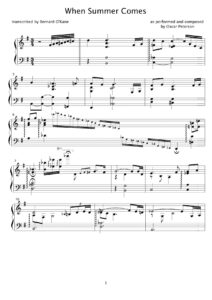 |
|
| Oscar Peterson You Look Good To Me (Musescore File).mscz | ||
| Oscar Peterson, You look good to me |
 |
|
| Oscar Peterson. The Man and His Jazz (Jack Batten)(Book) |
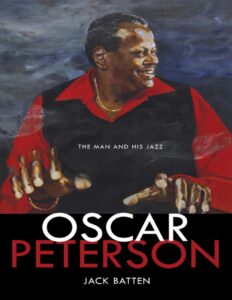 |
|
| Otha Young The Sweetest Thing (I’ve Ever Known) | Otha Young The Sweetest Thing (I’ve Ever Known) | |
| Other Possibilities (Chocolat OST) Rachel Portman | ||
| Othmar Klose and Rudolf Luckesh – Hear My Song, Violetta by Josef Locke | Othmar Klose and Rudolf Luckesh – Hear My Song, Violetta by Josef Locke (First Page) | |
| Otis Redding – (Sittin’ On) The Dock of the Bay (Piano Chords & Lyrics) | Otis Redding – (Sittin’ On) The Dock of the Bay (Piano Chords & Lyrics) | |
| Otis Redding Greatest Hits |
 |
Otis Redding |
| Otis Spann Don’t You Know |
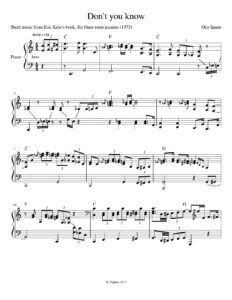 |
|
| Otis Spann Otis Blues |
 |
|
| Otis Spann Walking The Blues |
 |
|
| Out Of Africa John Barry (Musescore File).mscz | ||
| Outkast – Roses Intro | ||
| Outlander The Series Songbook Music From The Original Television Soundtrack (Bear Mccreary) |
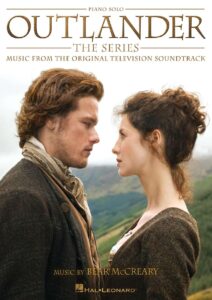 |
Outlander The Series Songbook Music From The Original Television Soundtrack (Bear Mccreary) |
| Over The Rainbow Version Easy Piano Solo |
 |
|
| Over The Rainbow – Jazz Standard | Over The Rainbow – Jazz Standard | |
| Over the Rainbow (from the Wizard of Oz) Sheet Music – arr. Phillip Keveren |
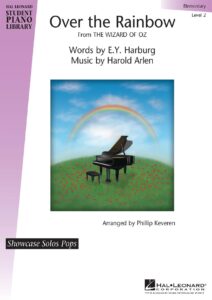 |
|
| Over The Rainbow (Improvisation) |
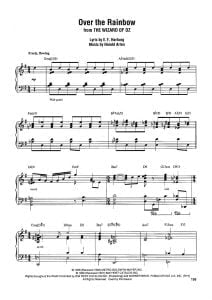 |
Over The Rainbow (Improvisation) |
| Over the Rainbow (Lead sheet for play along) by Harold Arlen |
 |
|
| Over The Rainbow (Musescore File).mscz | ||
| Over the Rainbow by Harold Arlen |
 |
|
| Over The Rainbow by Harold Arlen (Guitar arr. sheet music with TABs) | Over The Rainbow by Harold Arlen (Guitar arr. sheet music with TABs) | |
| Over The Rainbow Guitar Tablature TABs | Over The Rainbow Guitar Tablature TABs | |
| Over The Rainbow Harold Arlen And E.Y. Harburg Jazz Standard | Over The Rainbow Harold Arlen And E.Y. Harburg | |
| Oxford Handbook of Film Music Studies, The (David Neumeyer) Book |
 |
|
| Oxford History Of Music Vol 1 (1901) | Oxford History Of Music Vol 1 (1901) Book | |
| Oxford History Of Music Vol 2 (1901) | Oxford History Of Music Vol 2 (1901) Book | |
| Ozzy Osborne Crazy Train Piano Solo | Ozzy Osborne Crazy Train Piano Solo | |
| Ozzy Osbourne – Dreamer | ||
| Ozzy Osbourne Bark At The Moon Piano Vocal Guitar Chords |
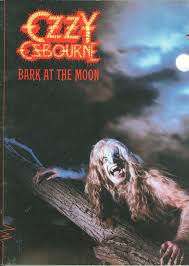 |
Ozzy Osbourne Bark At The Moon Piano Vocal Guitar Chords |
| Ozzy Osbourne Blizzard Of Ozz Guitar Tablature |
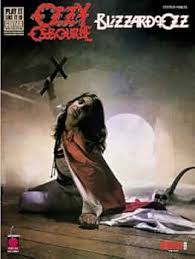 |
Ozzy Osbourne Blizzard Of Ozz Guitar Tablature |
| Ozzy Osbourne Randy Rhoads Tribute Guitar Vocal Tablature |
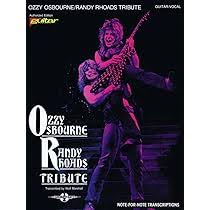 |
Ozzy Osbourne Randy Rhoads Tribute Guitar Vocal Tablature |
| Ozzy Osbourne The Best Of Guitar Tablature |
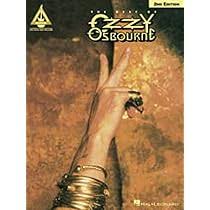 |
Ozzy Osbourne The Best Of Guitar Tablature Contents |
| Pablo Nouvelle Jbel Sirwa |
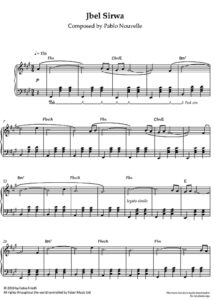 |
|
| Pachelbel – Canon In D Guitar Tabs Arr. (Musescore File).mscz | ||
| Pachelbel – Canon In C | ||
| Pachelbel – Canon in D (Guitar arr. sheet music with TABs) |
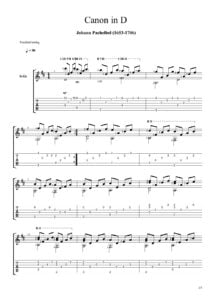 |
|
| Pachelbel – Canon In D (Piano Solo Arr. Sheet Music Noten) (Musescore File).mscz | ||
| Pachelbel – Canon in D (Piano solo arr. sheet music, Noten) | Pachelbel – Canon in D (Piano solo arr. sheet music, Noten) | |
| Pachelbel Canon For Piano Original |
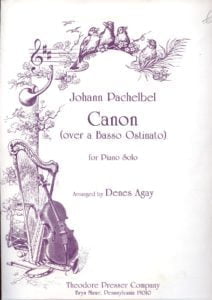 |
|
| Pachelbel Canone per tre violini e basso (piano transcription) | ||
| Paco De Lucia Lo Mejor De (The Best Of) Six Guitar Pieces |
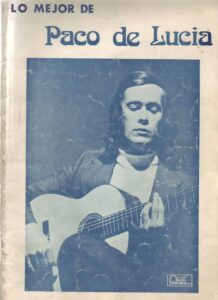 |
Paco De Lucia Lo Mejor De (The Best Of) Six Guitar Pieces |
| Paco De Lucia Entre Dos Aguas Guitar Tab |
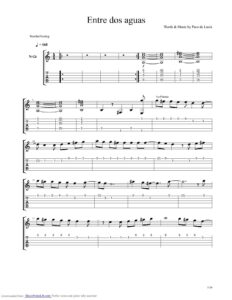 |
|
| Paco De Lucia Greatest Hits Flamenco Guitar sheet music book |
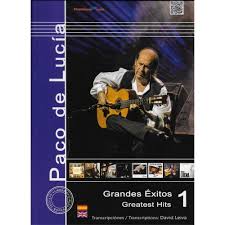 |
 |
| Paddington 2 – The Pop-Up Book (Dario Marianelli) | ||
| Paddington 2 – The Pop-Up Book (easier version) | ||
| PAGANINI Caprice A Minor | ||
| Paganini For Acoustic Guitar Tablature by Ben Bolt |
 |
Paganini For Acoustic Guitar Tablature by Ben Bolt |
| Pam Wedgwood Its Never Too Late To Play Piano (Book) |
 |
|
| Pam Wedgwood The Jazzin About Piano Anthology |
 |
Pam Wedgwood The Jazzin About Piano Anthology |
| Pam Wedgwood The Rusty Pianist |
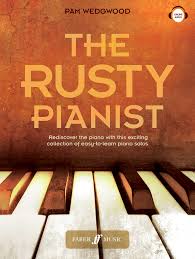 |
Pam Wedgwood The Rusty Pianist |
| Paolo Conte Anthology |
 |
Paolo Conte Anthology |
| Papa Roach Last Resort (Guitar And Tabs Sheet Music) |
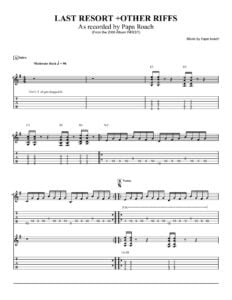 |
|
| Papa Roach – Last Resort (Guitar Sheet Music) (Musescore File).mscz | ||
| Papathanassiou Rain And Tears Aphodite’s Child |
 |
|
| Paradise theme – Angel OST (Philippe Rombi) | ||
| Paramore – Misery Business | ||
| Paraules d’amor – JM Serrat | ||
| Park Hyo Shin The Flower Of Snow | Park Hyo Shin The Flower Of Snow | |
| Parkening – Classical Guitar Method Vol 1 |
 |
|
| Parkening – Classical Guitar Method Vol 2 |
 |
|
| Parkening Christopher Parkening Duets And Concertos Guitar with TAB |
 |
Parkening Christopher Parkening Duets And Concertos Guitar with TAB |
| Parkening Christopher Parkening Guitar Solo Pieces with TAB |
 |
Parkening Christopher Parkening Guitar Solo Pieces with TAB |
| Parlami di me (La Dolce Vita) Nino Rota | ||
| Parliamo Di Musica – Stefano Bollani (Book Italiano Italian) |
 |
|
| Parole parole (Mina) | ||
| Parry Gripp – It’s Raining Tacos (Piano Solo) |
 |
|
| Parry, John Our Prayer To Thee Arr Mack Wilberg |
 |
|
| Parson’s Farewell – John Playford (ABRSM Piano Grade 1) | Parson’s Farewell – John Playford (ABRSM Piano Grade 1) | |
| Parson’s Farewell – John Playford (ABRSM Piano Grade 1) (Musescore File).mscz |

